Make:able 2022 Winners Announcement
The 2022 make:able challenge involved hundreds of teams from around the world designing assistive devices for people in their local communities. Once again, we have been truly overwhelmed with the inspirational stories and creative outcomes, which ranged from low-tech mobility devices to assistive switches, sight loss solutions, prosthetics and much more. One of the key aims of make:able was to go from teaching young people how to just use technology to teaching them how to solve complex problems with technology. As you’re about to see, teams did just that!
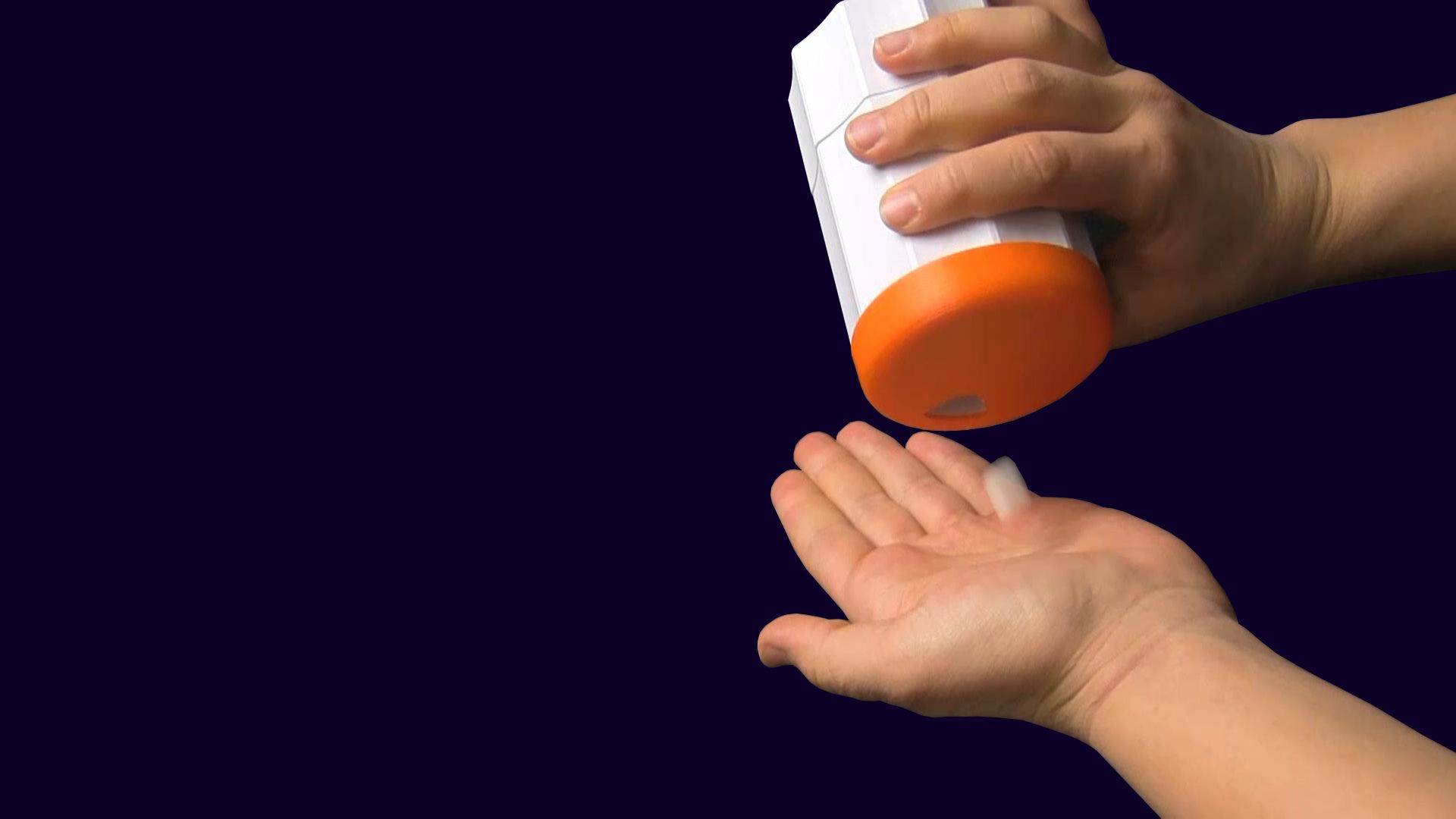
1st July 2022 • Make:able
Before we get to the results, we’d like to thank the following organisations and people:
- Autodesk for their continued support and amazing software tools that allow people to bring their creative ideas to life.
- Make:able partner organisations and advisory members for their expert advice and insights.
- Our sponsors for helping us develop a prize pool full of 3D printers, 3D scanners, filament and gift cards.
- The judging panel for their time and creative feedback in the judging process.
- Make:able participants who have shown an abundance of empathy, creativity, grit and determination.
- All the end users who have given their time to be part of the challenge.
- And last but not least, the superstar educators who are coaching the next generation of creative problem solvers.
Now without further ado, let’s get to the results! Over the past month, our expert judging panel has been casting their votes on an online platform called Mural, which is essentially a giant digital whiteboard. Each judge had 2 voting tokens (1st place, 2nd place), which they placed next to their chosen submissions in each age group and category. Once all judges placed their votes, they were counted (2 points for 1st place, 1 point for 2nd place) to reveal the winners.
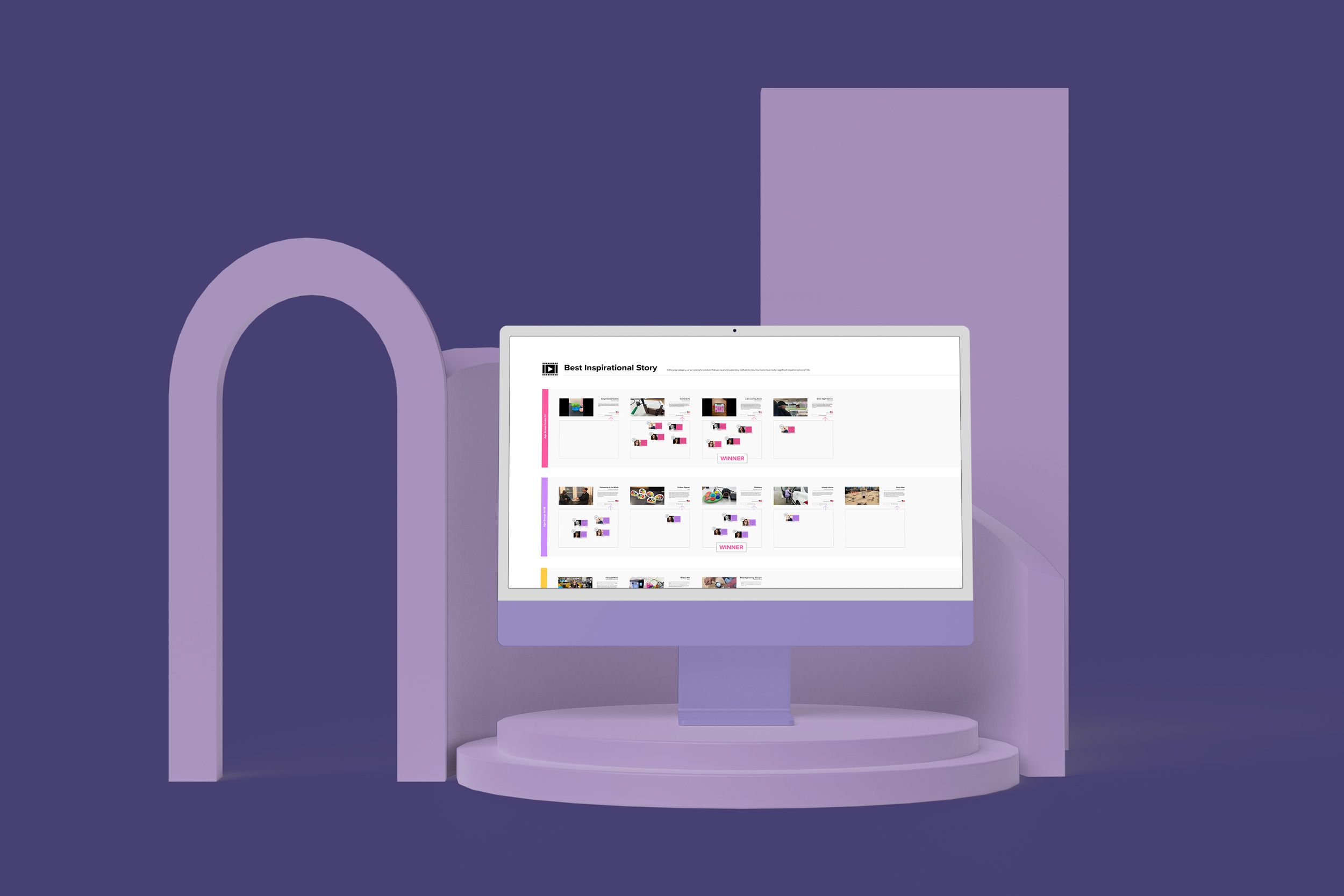
In addition to announcing the winners, we are also providing you with access to all the finalist video submissions and the votes/comments made by the judges. You can access the judging platform here.
- To navigate around the Mural – use your mouse wheel to zoom and click and drag to pan around. If you are using a trackpad, head to the navigation settings to switch modes.
- To view the video submissions, click the ‘open link’ tab next to the ‘view video submission’ buttons.
The winners of each category are also highlighted below and in the coming weeks, we’ll be making a recap video and releasing some announcements on next year’s make:able. We hope you enjoy looking through the content and a huge congratulations to the winners and all participants!
best inspirational story (under 14)
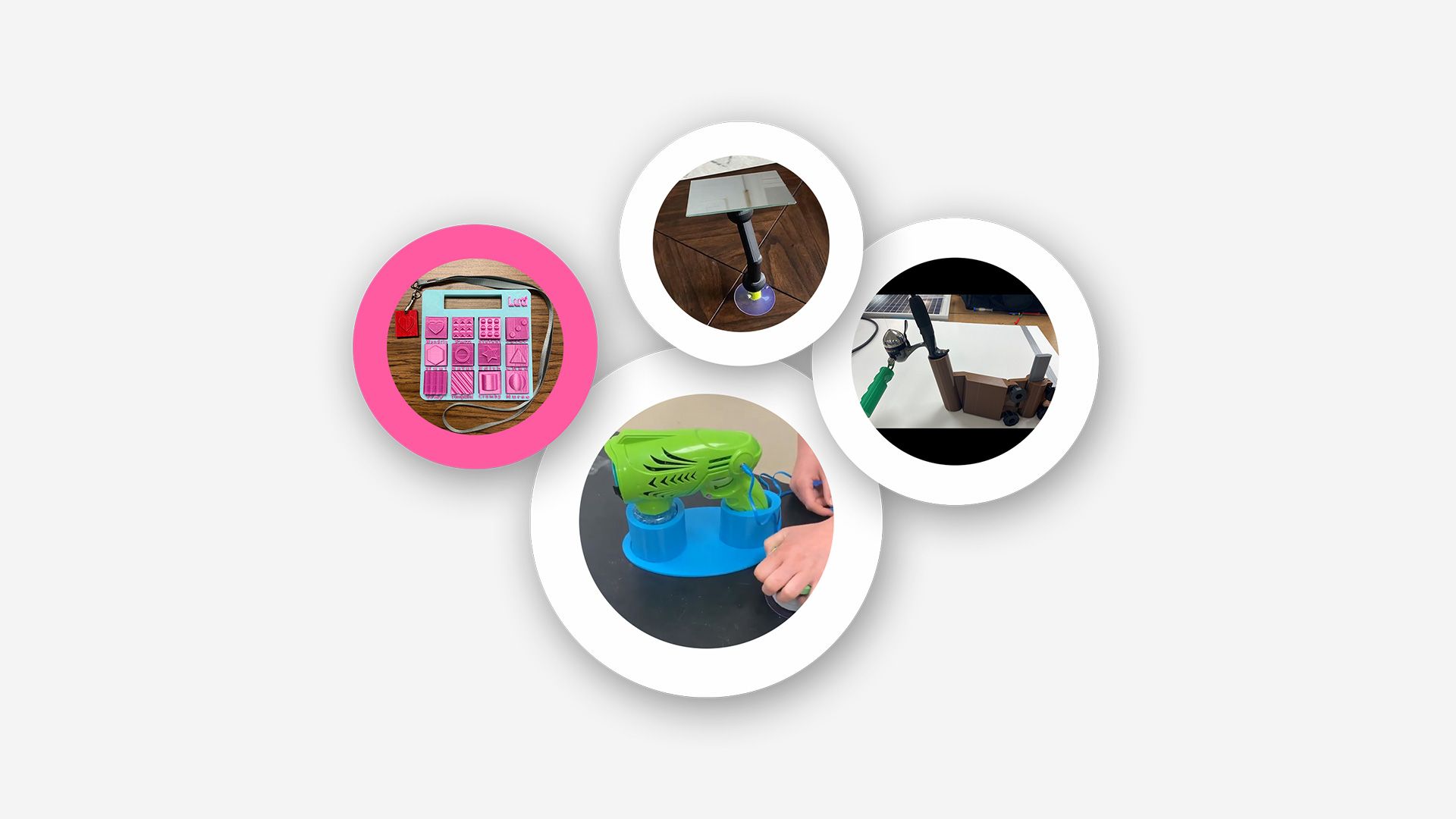
The winners of ‘Best Inspirational Story’ for the under 14 age group is Luti’s Learning Board from Westwood Elementary (USA), who will receive a Matterhackers Pulse 3D Printer. The team developed a series of sensory shape identifiers for Luti, who is blind and non-verbal. The shape identifiers attach to the lanyards of people Luti interacts with on a daily basis, allowing her to identify who she is interacting with by touching their tactile lanyards.
best inspirational story (14-18)
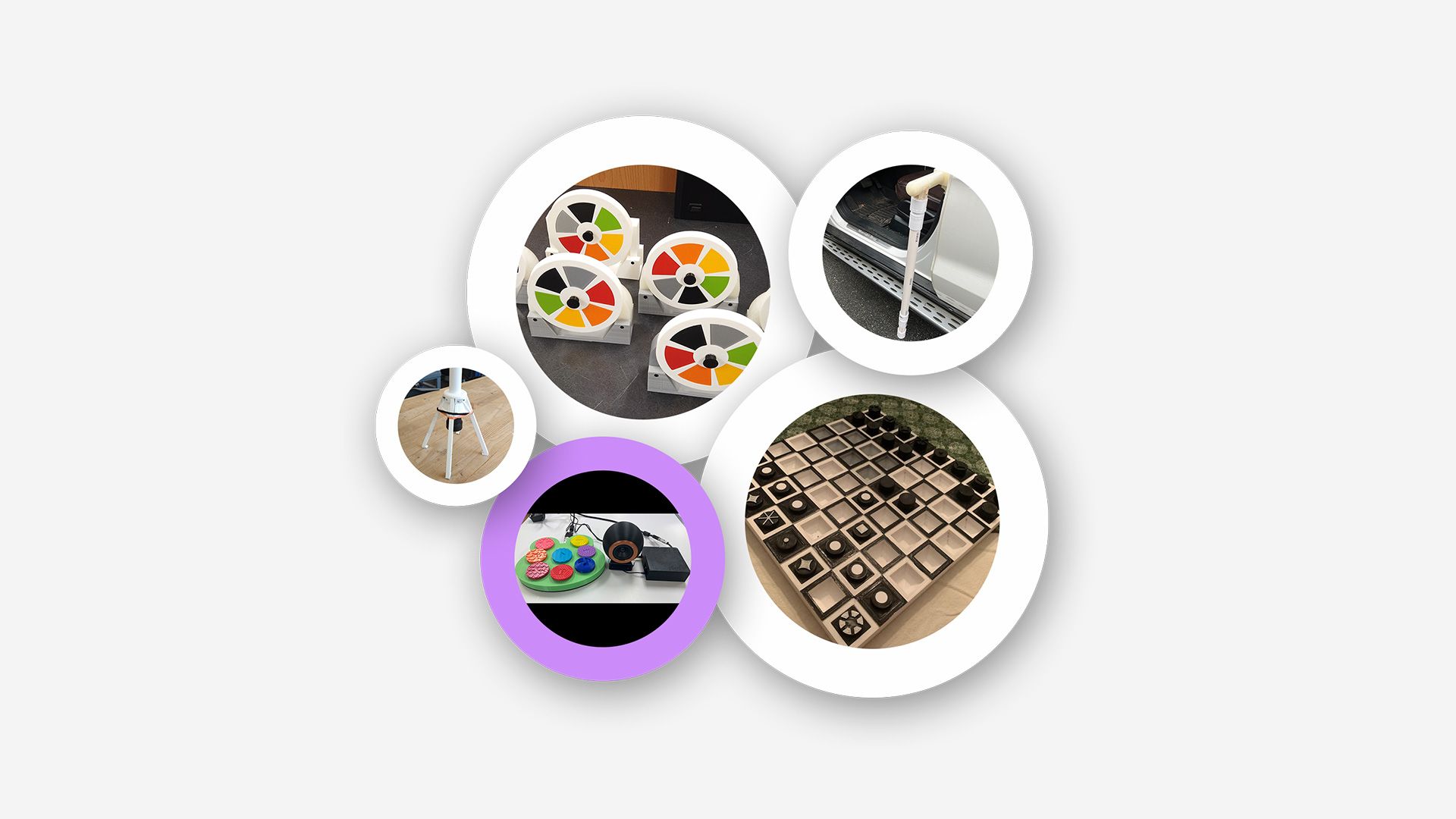
The winners of ‘Best Inspirational Story’ for the 14-18 age group is Team Ribbitters from the Union University Outreach Program (USA), who will receive a Matterhackers Pulse 3D Printer. The team designed a device to help a 13 year old girl with cerebral palsy to control her music. The device is made up of large assistive buttons, a speaker and an Alexa device. It allows the user to push the large buttons to play, pause, skip songs and more.
best inspirational story (over 18)
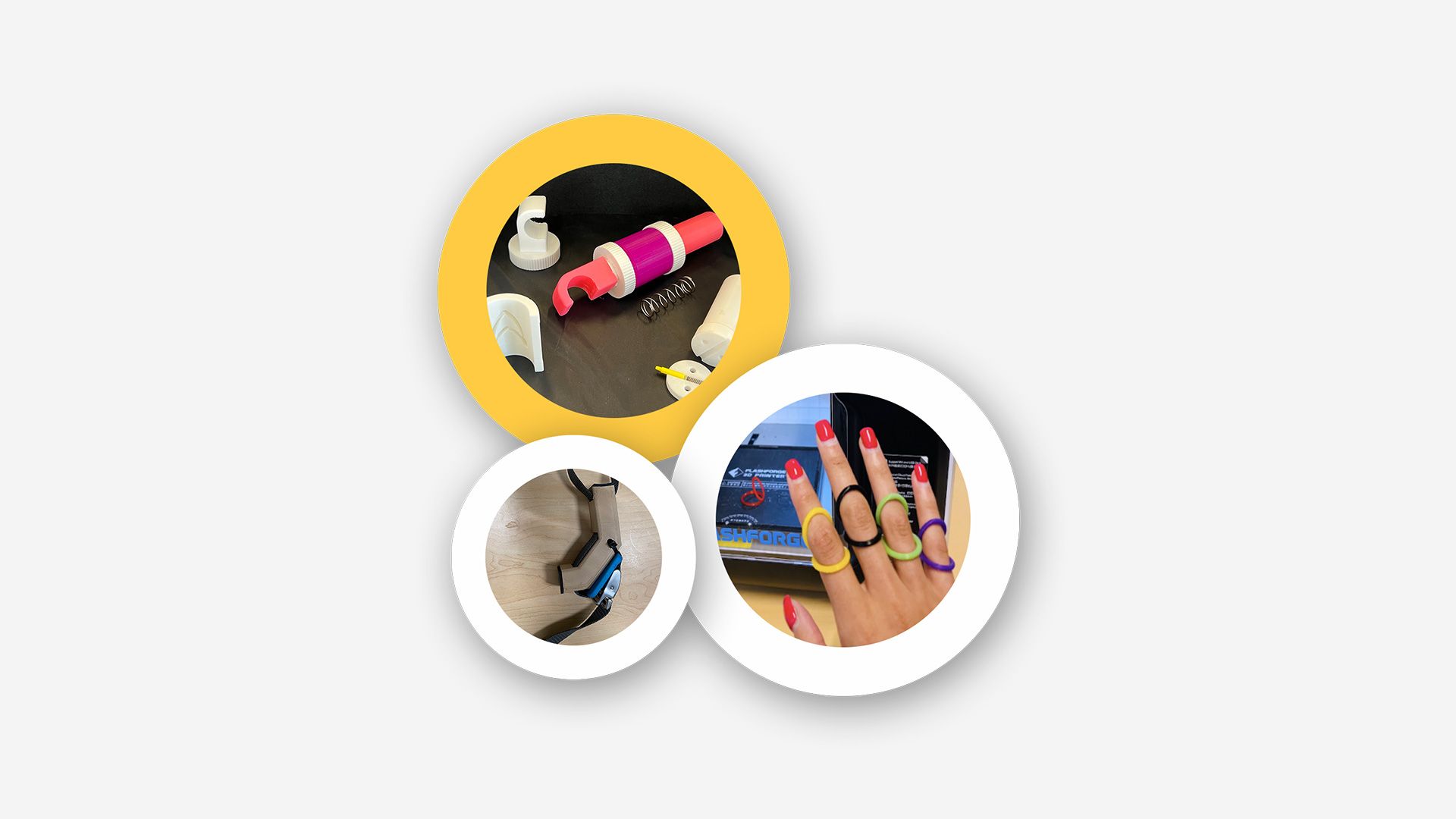
The winners of ‘Best Inspirational Story’ for the over age group is Fab Lab El Paso (USA), who will receive a $500 gift card from Autodesk. The team designed a bicycle grip prosthetic for Juaisca. Juaisca was a former swimmer of the national team in Venezuela and a water polo player. Following her amputations caused by meningitis, Juaisca switched to participating in triathlons and won first place last year in the PTS3 nationals.
best use of autodesk software (under 14)
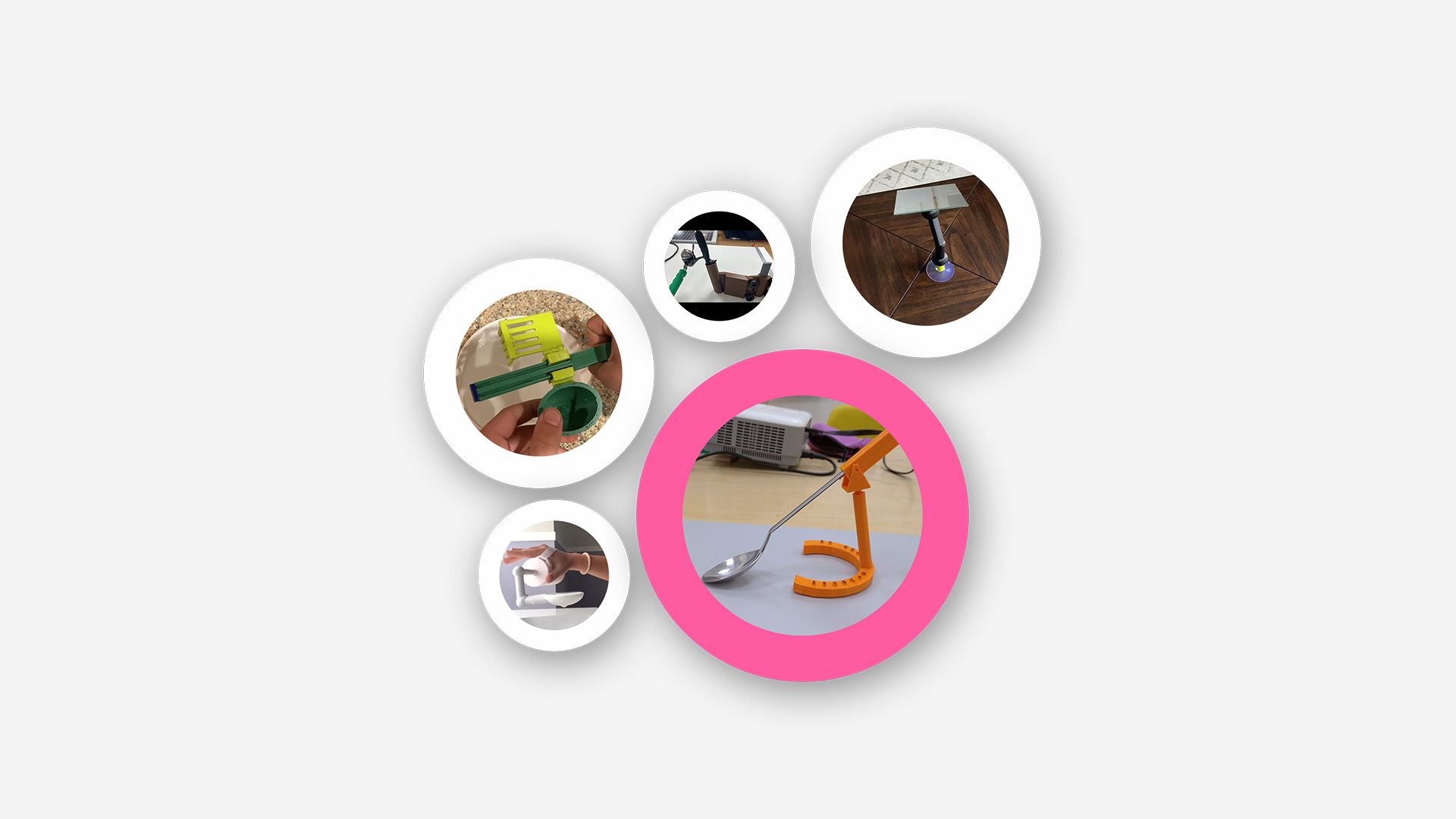
The winners of ‘Best Use of Autodesk Software’ for the under 14 age group is 3D Kourampiedes from Exadas (Greece), who will receive an Ultimaker 2 Go 3D printer. The team designed an assistive eating device for Michelle, a young girl with hypotonia. The ‘crane spoon’ holds cutlery in a stand and utilises a lever system to move it in a controlled manner with little force.
best use of autodesk software (14-18)
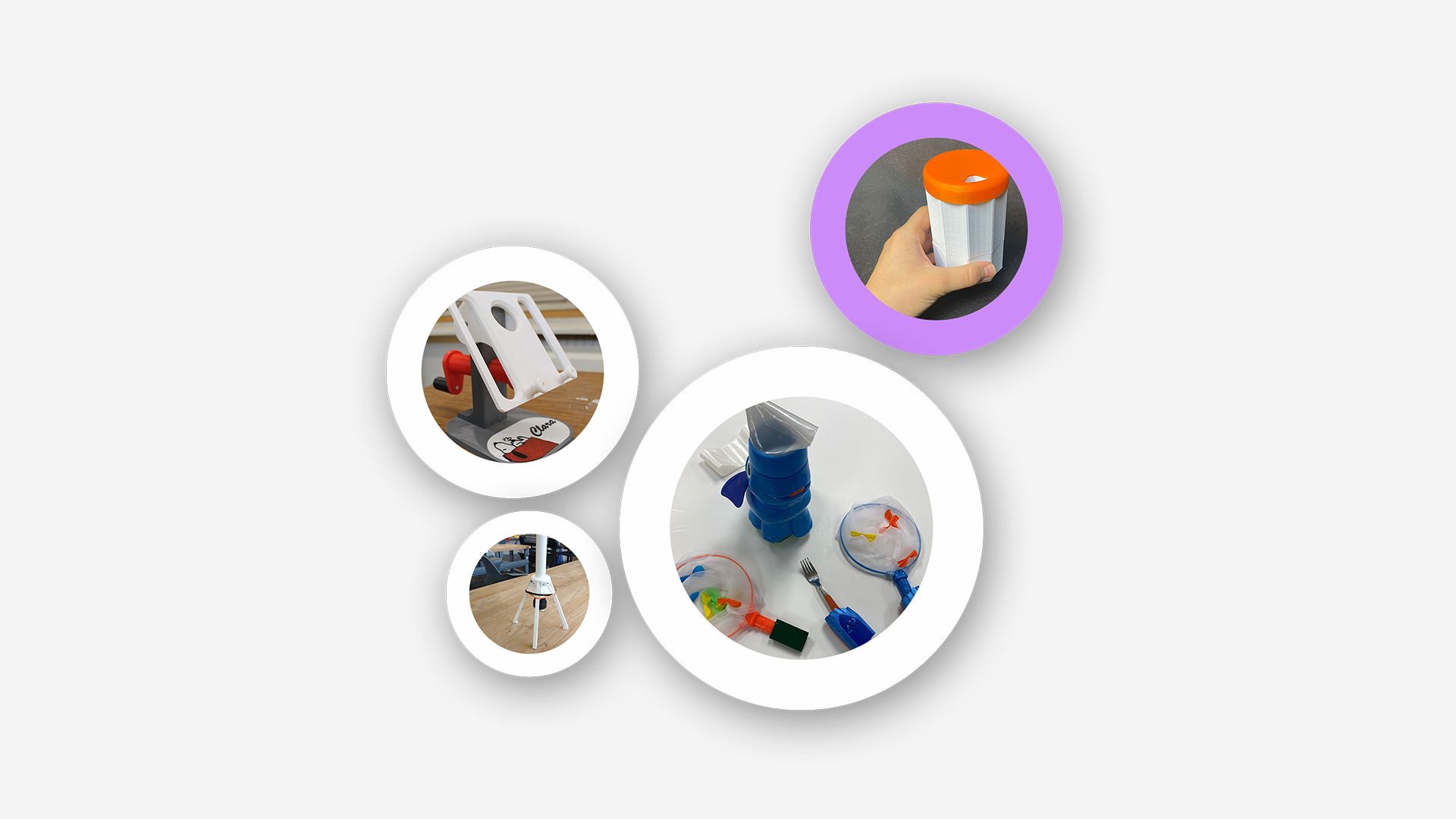
The winners of ‘Best Use of Autodesk Software’ for the 14-18 age group is Copley Creators from Copley High School (USA), who will receive a CraftBot Plus Pro 3D Printer. The team designed a pill dispenser for Steve, who has Parkinson’s disease. The dispenser makes use of multiple components and materials, together with a spring mechanism that ensures only one pill is released at a time.
best use of autodesk software (over 18)
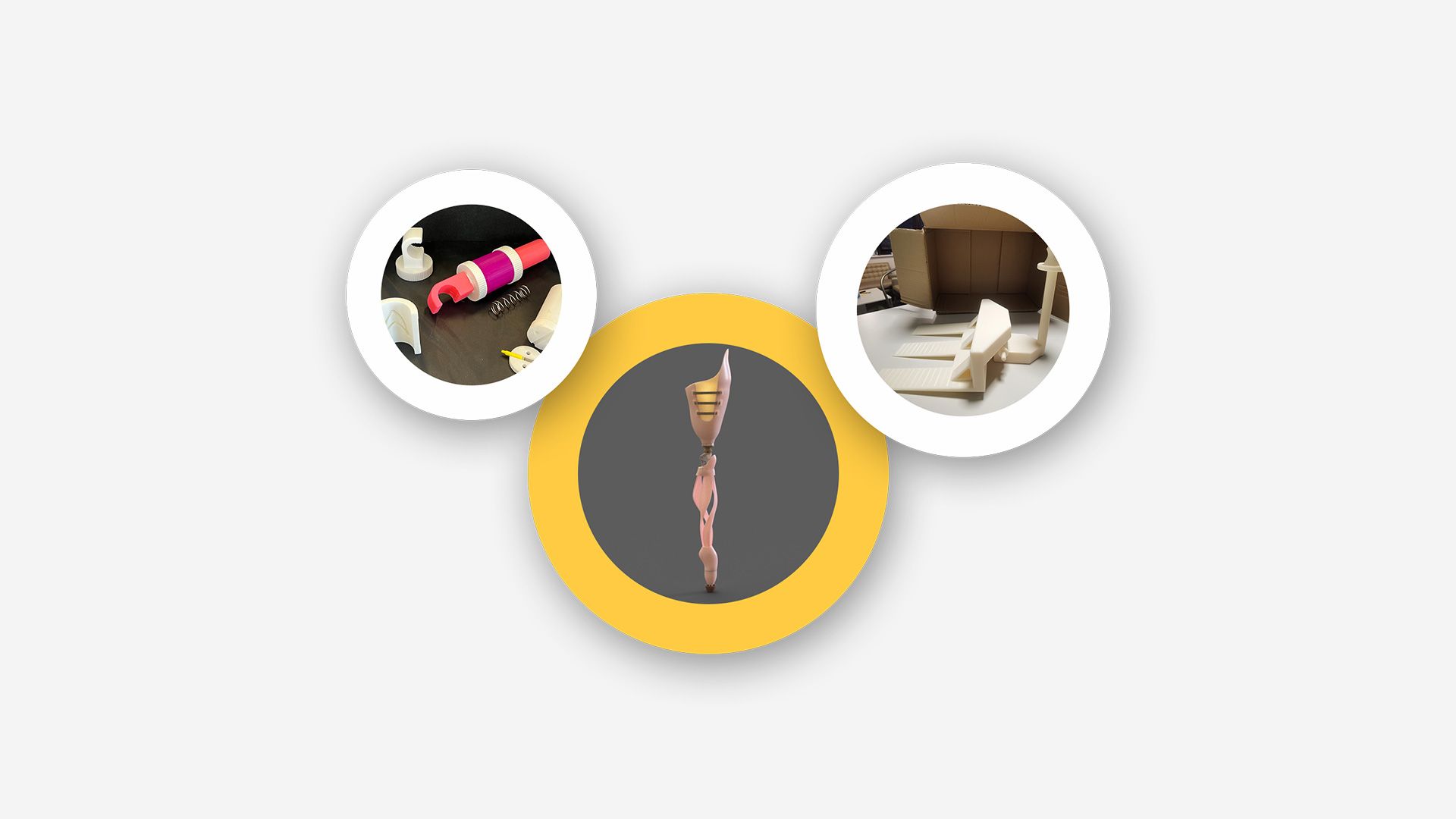
The winners of ‘Best Use of Autodesk Software’ for the over 18 age group is Dance-on from The University of Glasgow (UK), who will receive a $500 gift card from Autodesk. Renata designed a lower limb ballet prosthetic for above knee amputees. Driven by a survey conducted with a University dance society, Renata focused on the pirouette movement to inspire her dynamic design, which supports a rotational movement.
best showcase of customisation (under 14)
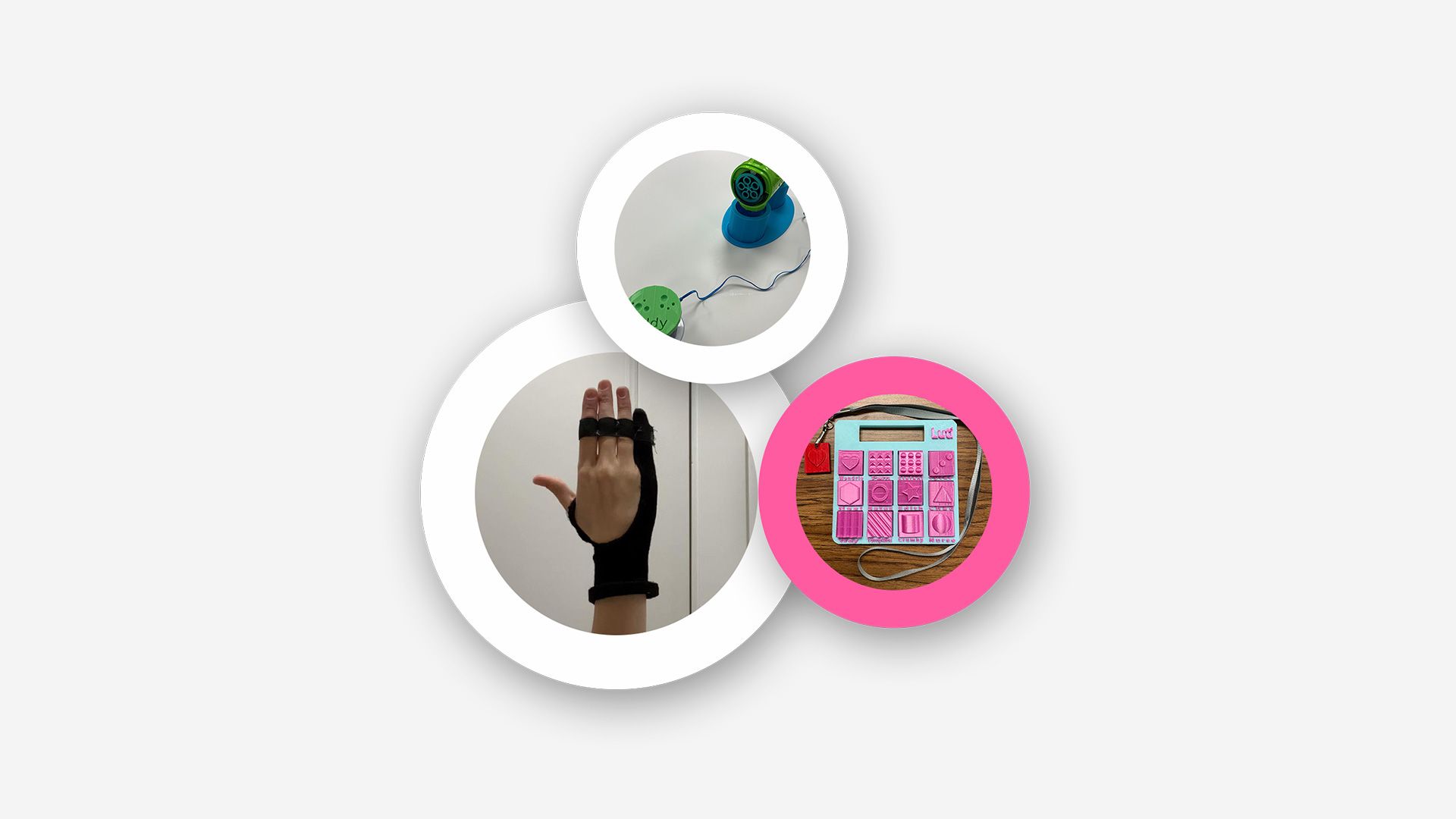
The winners of ‘Best Showcase of Customisation’ for the under 14 age group is Luti’s Learning Board from Westwood Elementary (USA), who are picking up a 2nd award for their series of sensory shape identifiers – designed for Luti who is blind and non-verbal. The school will be receiving the prize of an Einscan-SE 3D scanner.
best showcase of customisation (14-18)
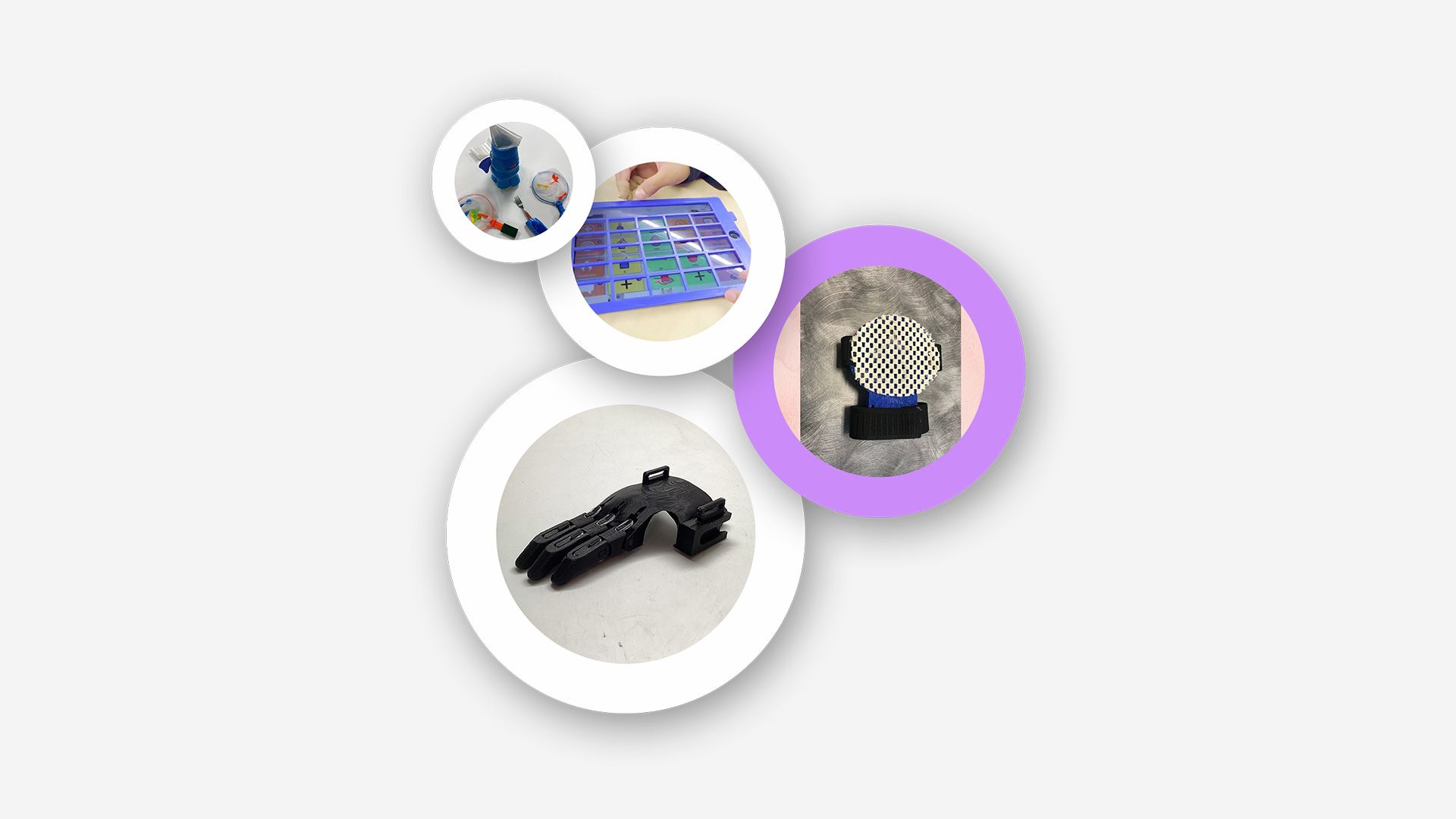
The winners of ‘Best Showcase of Customisation’ for the 14-18 age group is Team Go Kylie from Creekside Christian Academy (USA), who will receive an Einscan-SE 3D scanner. The team designed a basketball grip device for Kylie, who was born with a hand deformity. The device features a rounded plate that attaches to Kylie’s hand. The plate neatly fits the curve of a basketball and this provides Kylie with a large enough surface area to catch, bounce and throw the ball comfortably..
best showcase of customisation (over 18)
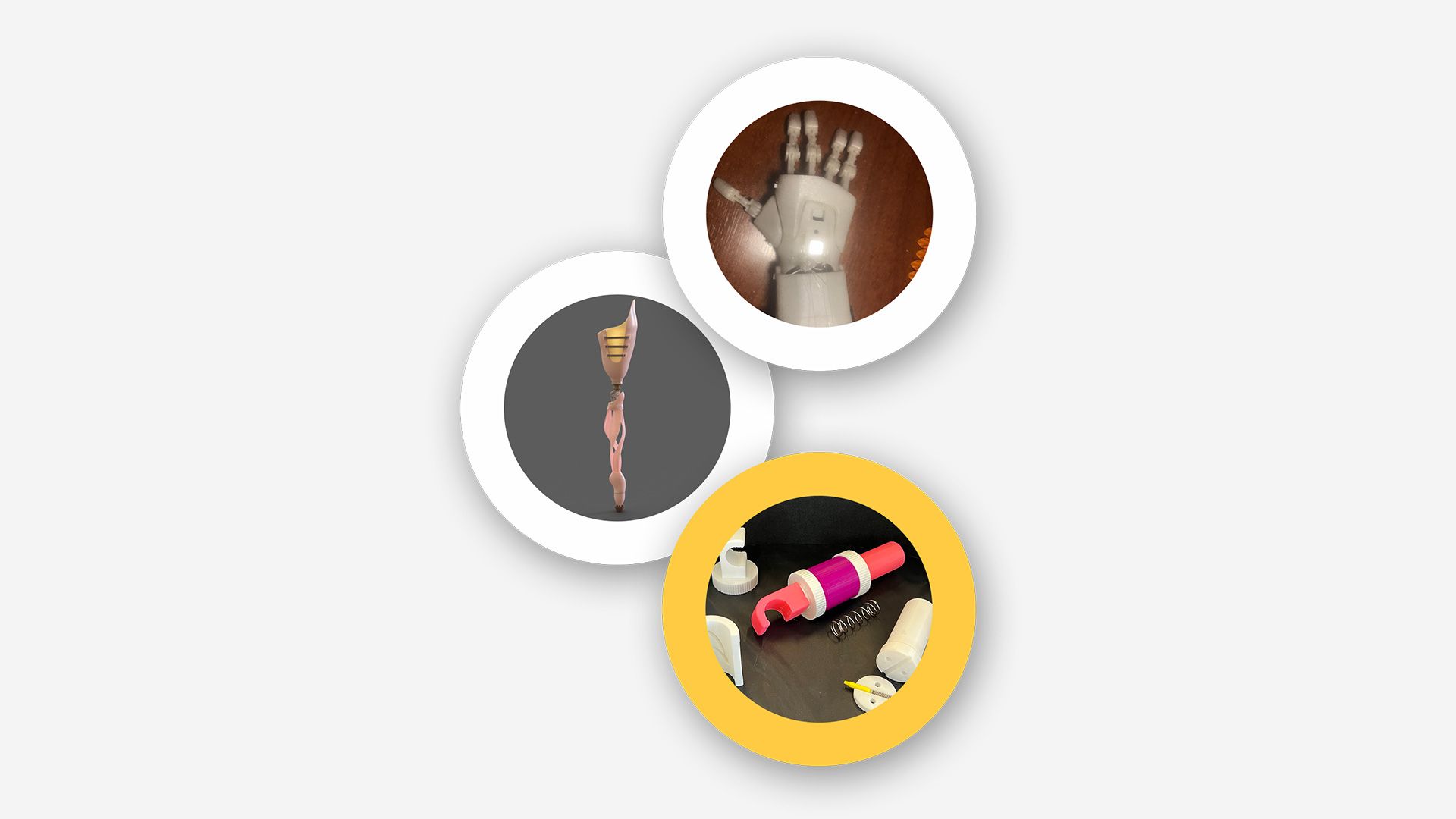
The winners of ‘Best Showcase of Customisation’ for the over 18 age group is Fab Lab El Paso (USA), who are picking up a 2nd award for their bicycle grip prosthetic – designed for Juaisca. The team will be receiving the prize of another $500 gift card from Autodesk.
best open source design (under 14)
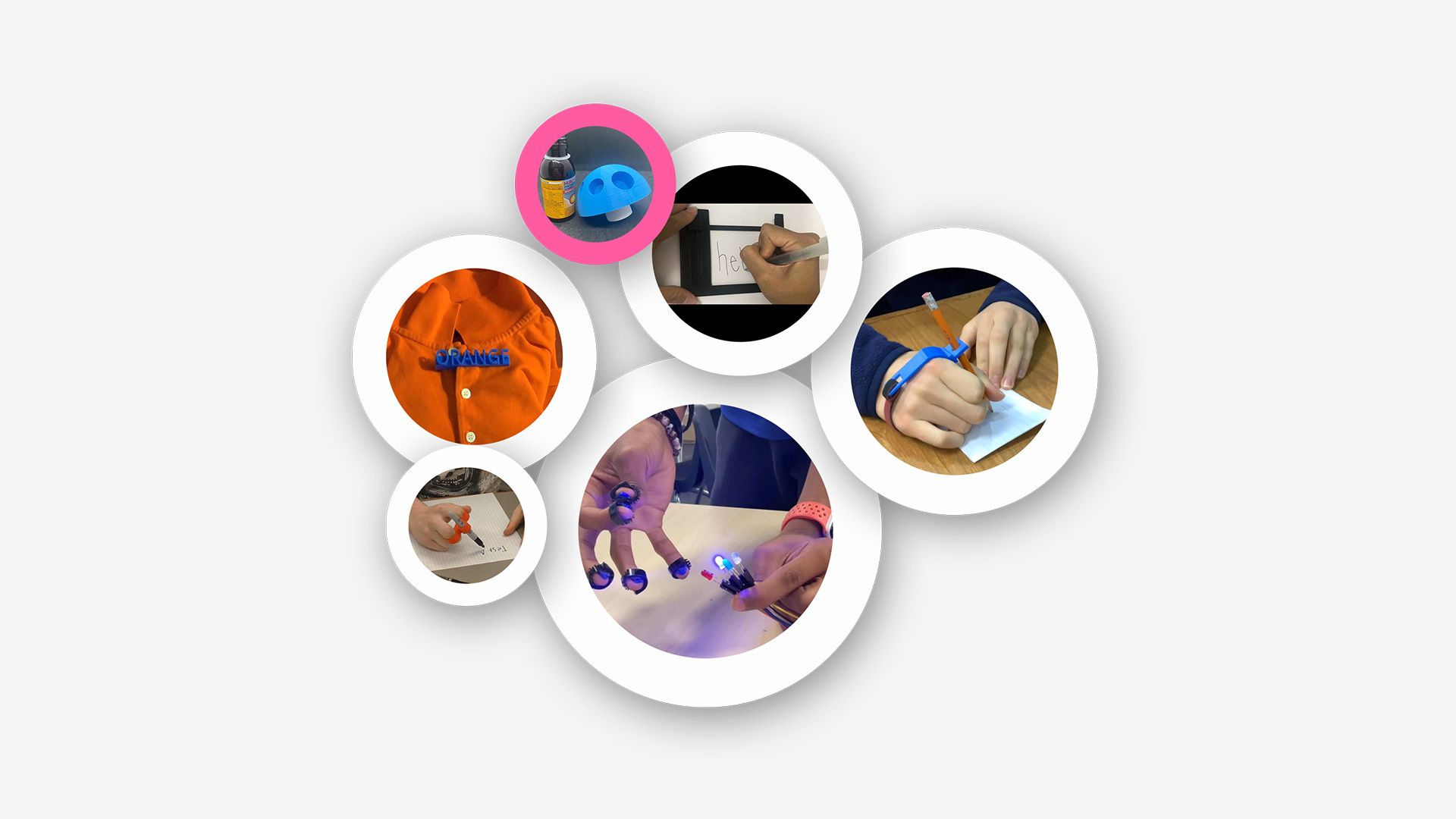
The winners of ‘Best Open Source Design’ for the under 14 age group is WHS Design from Wimbledon High School (UK), who will receive a MH Build “The Works!” Filament Bundle Pack. The team designed an assistive medicine bottle opener for Marion, who has arthritis in her hands. Inspired by nature, the mushroom shaped device allows Marion to open medicine bottles using an open grip supported by finger holes.
best open source design (14-18)
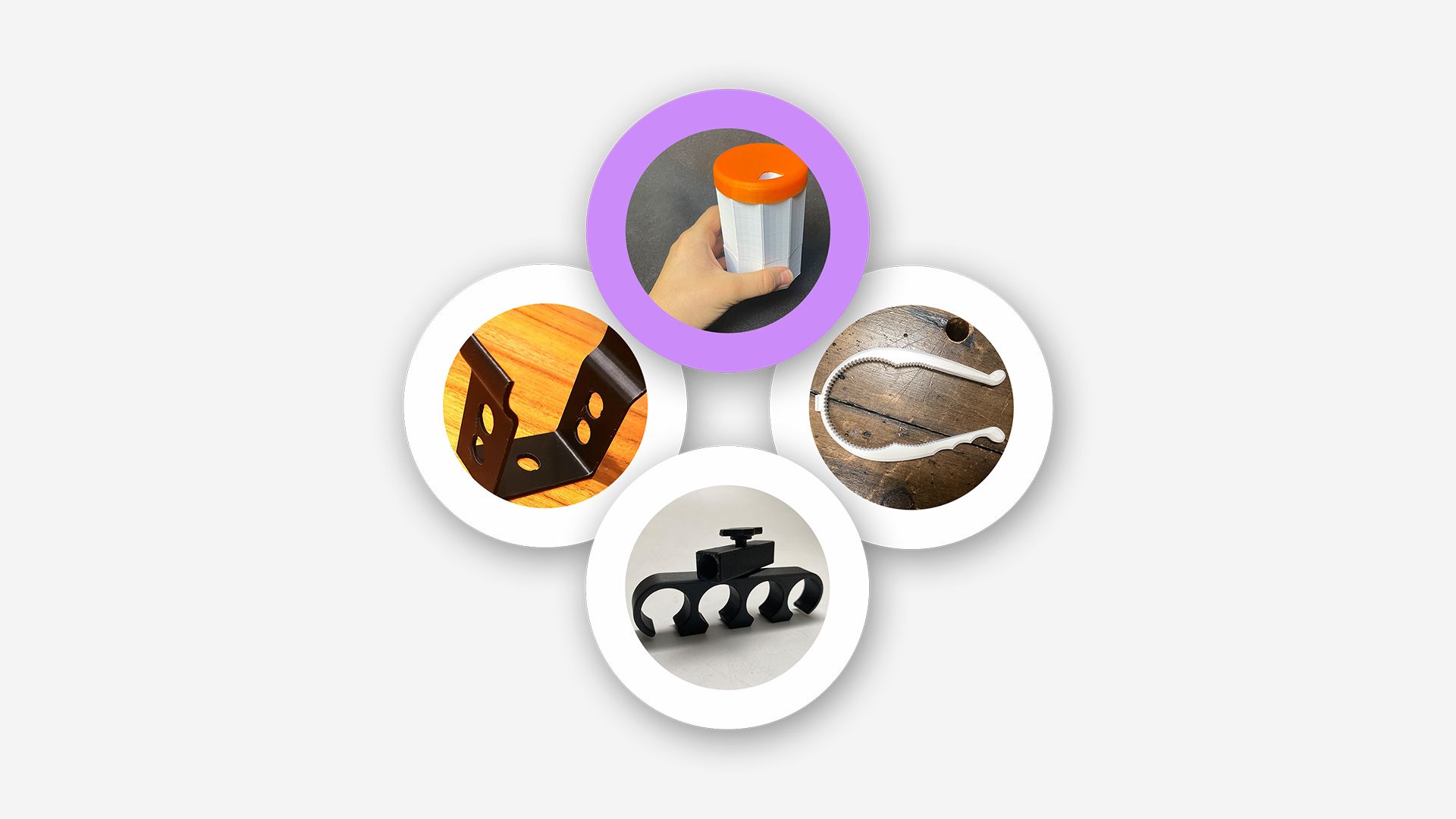
The winners of ‘Best Open Source Design’ for the 14-18 age group is Copley Creators from Copley High School (USA), who are picking up a 2nd award for their pill dispenser – designed for Steve, who has Parkinson’s disease. The team will be receiving the prize of a MH Build “The Works!” Filament Bundle Pack.
best open source design (over 18)
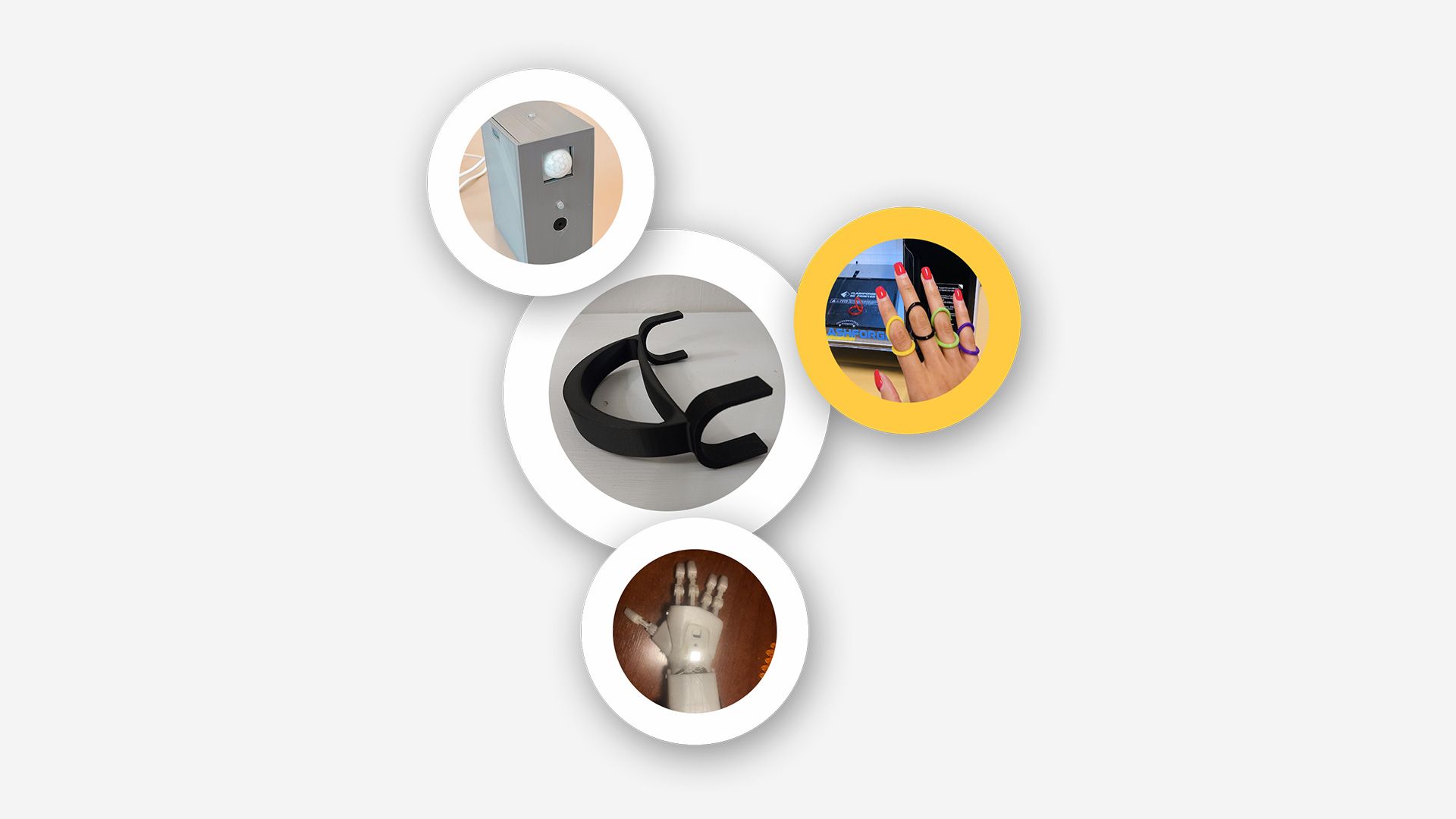
The winners of ‘Best Open Source Design’ for the over 18 age group is Motion 360 (USA), who will receive a $500 gift card from Autodesk. Natasha has designed customisable, visually attractive, functional 3D-printed finger/hand orthoses. Their unique lightweight designs make individuals with chronic conditions feel confident, whilst also being accessible to those of lower socioeconomic statuses to target the health inequities faced by our society today.
best use of 3d printing (under 14)
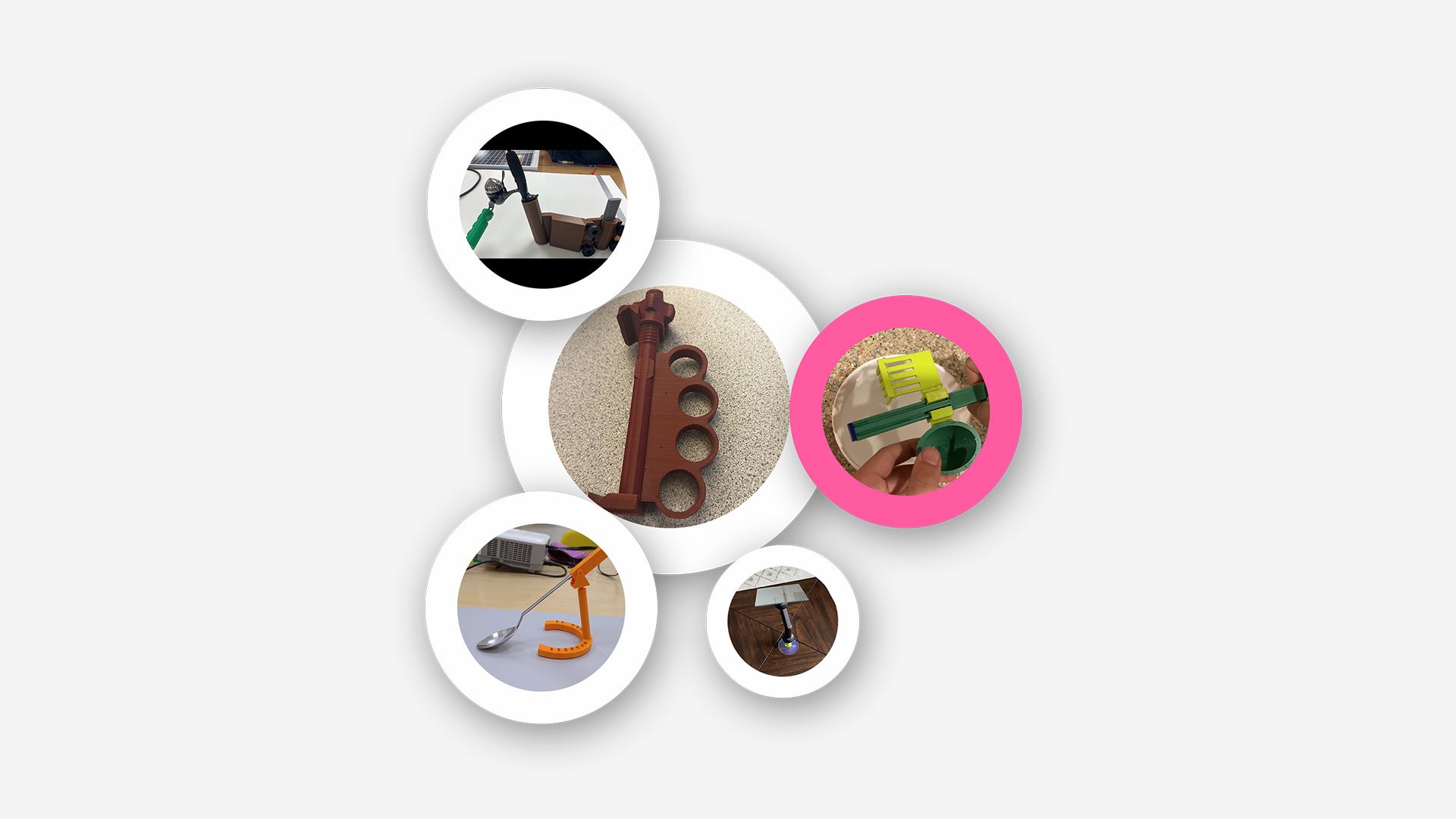
The winners of ‘Best Use of 3D Printing’ for the under 14 age group is Max-n-Jack from Selzer School (USA), who will receive an Original Prusa i3 MK3S+ Assembled 3D printer. The team designed the ‘Trenomor’ eating device for Max’s Grandmother, who suffers from hand tremors. The Trenomor is a special type of spork that stabilizes the user’s hand via a wrist piece. Additionally, the spork makes uses of sliding rails that allow you to control the position of the fork and spoon attachments.
best use of 3d printing (14-18)
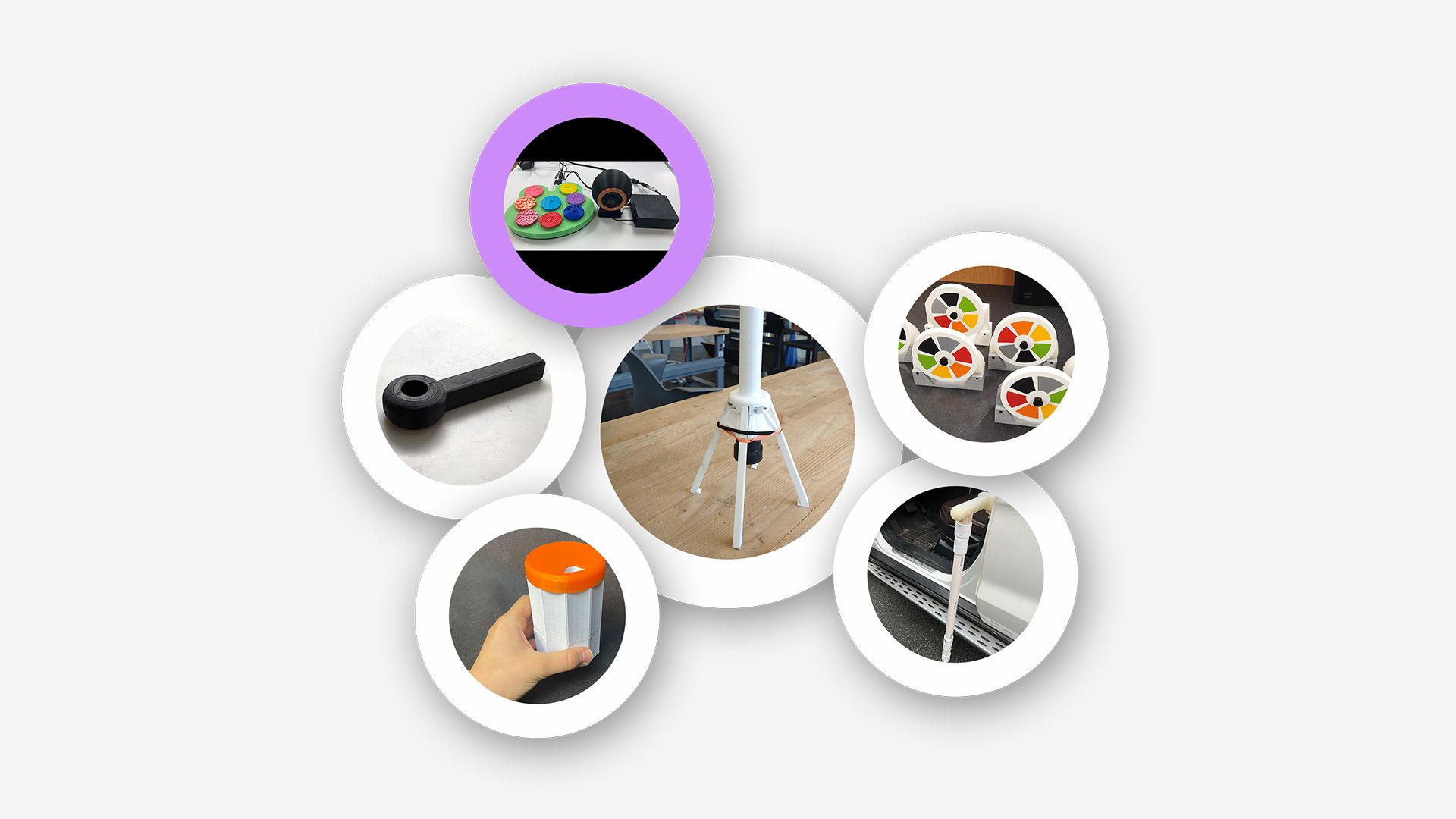
The winners of ‘Best Use of 3D Printing’ for the 14-18 age group is Team Ribbitters from the Union University Outreach Program (USA), who are picking up a 2nd award for their music control device – designed for a 13 year old girl with cerebral palsy. The team will be receiving the prize of an Original Prusa i3 MK3S+ Assembled 3D printer.
best use of 3d printing (over 18)
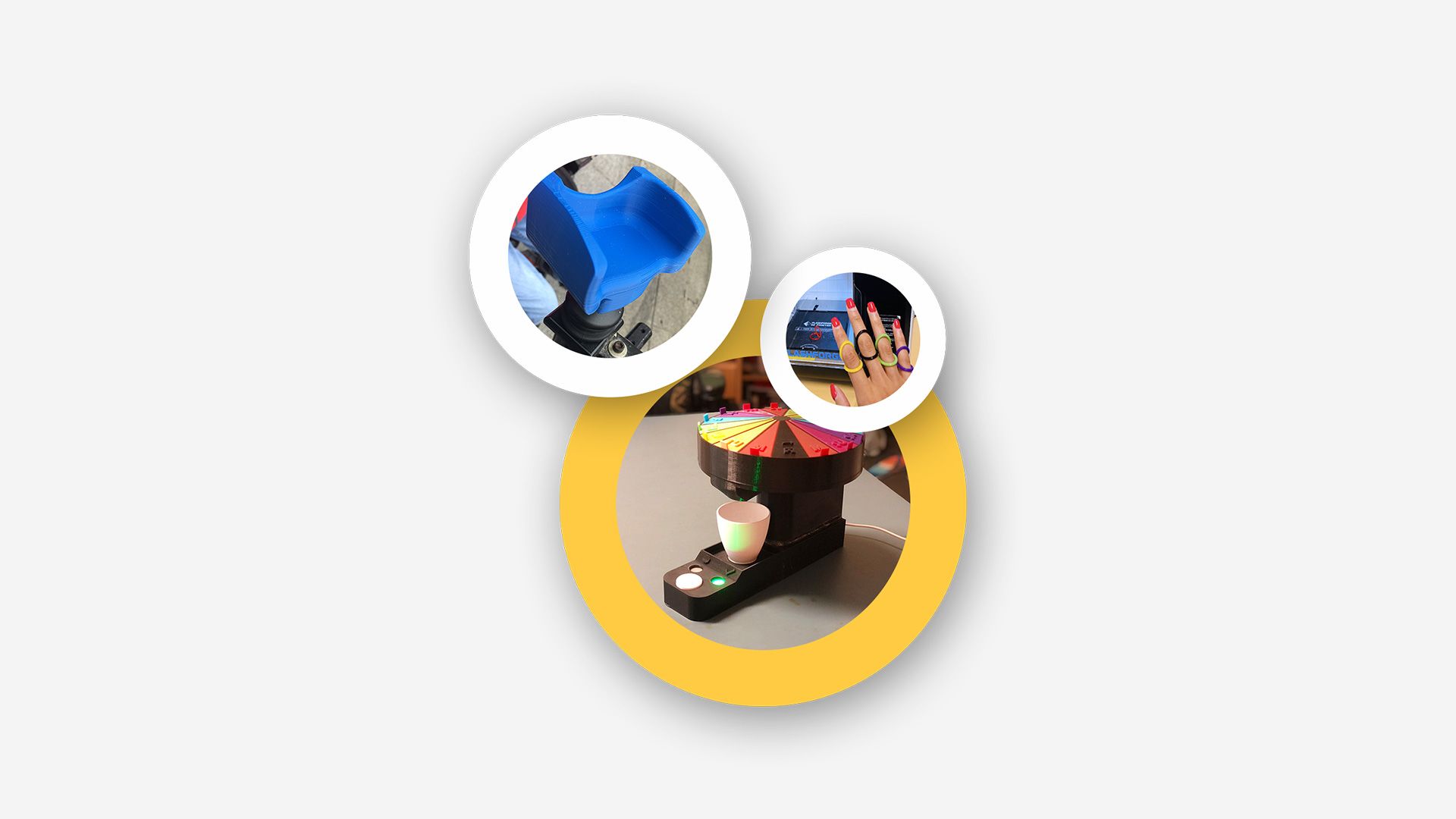
The winners of ‘Best Use of 3D Printing’ for the over 18 age group is Dispense.rx from Biola University (USA), who will receive a $500 gift card from Autodesk. The team designed a pill dispenser for Jackson’s Grandfather, who suffers from various health issues such as low motor skills and shaky hands. Inspired by a gumball/Kurig coffee machine hybrid, the pill dispenser was designed with the intention of dispensing one’s daily medications all in one button press.
best showcase of iterative design (under 14)

The winners of ‘Best Showcase of Iterative Design’ for the under 14 age group is Luti’s Learning Board from Westwood Elementary (USA), who are picking up a 3rd award for their series of sensory shape identifiers – designed for Luti who is blind and non-verbal. The school will be receiving the prize of a Filamentive Filament Education Bundle.
best showcase of iterative design (14-18)
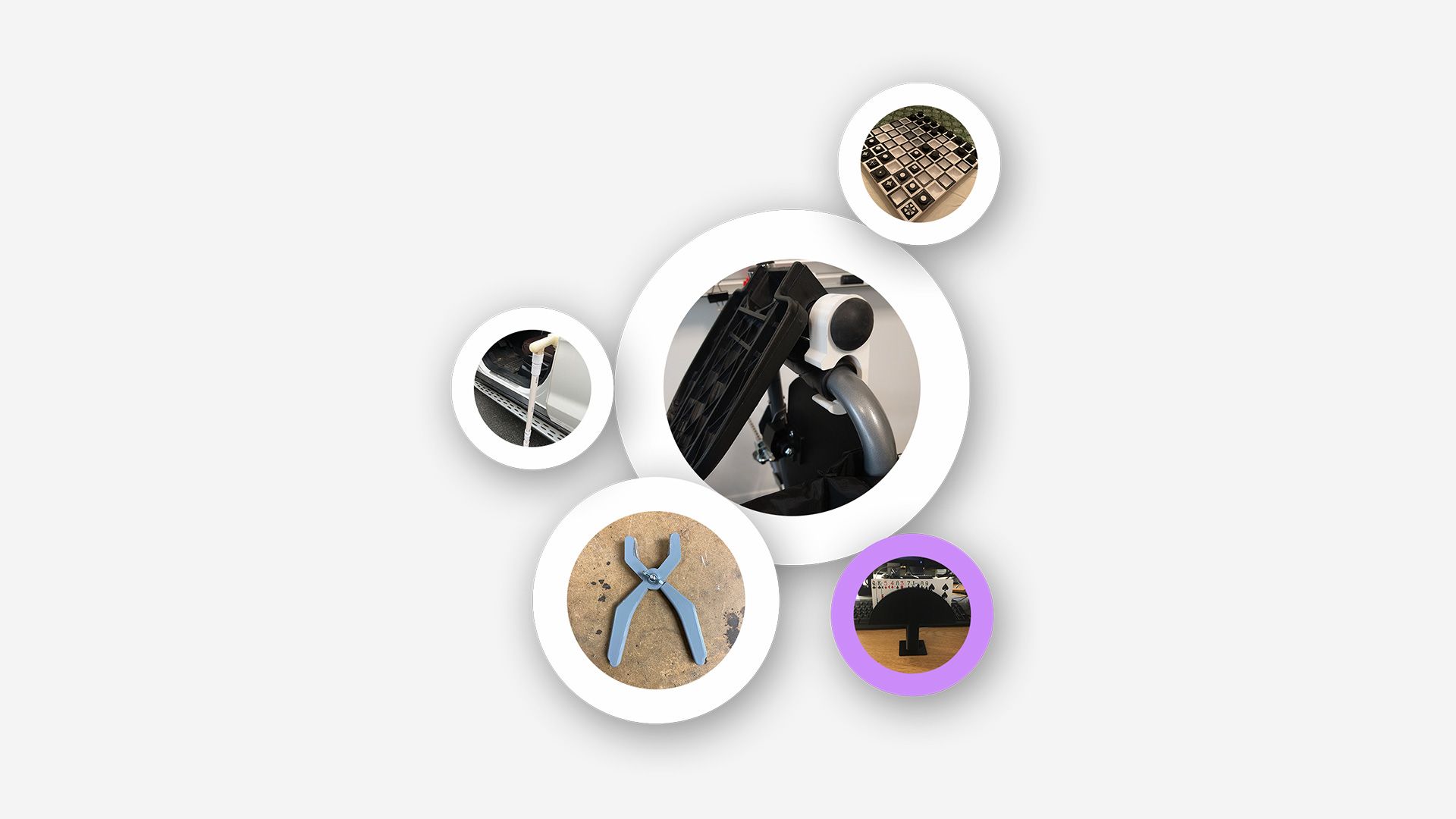
The winners of ‘Best Showcase of Iterative Design’ for the 14-18 age group is Team Noah from Bellevue Christian School (USA), who will receive a Filamentive Filament Education Bundle. The team designed a card holder for their end user Noah – a 6 year old boy who has Freeman Sheldon Syndrome. The 3D printed device allows Noah to play card games without putting too much stress on his hands, whilst also keeping his cards hidden from other players.
best showcase of iterative design (over 18)
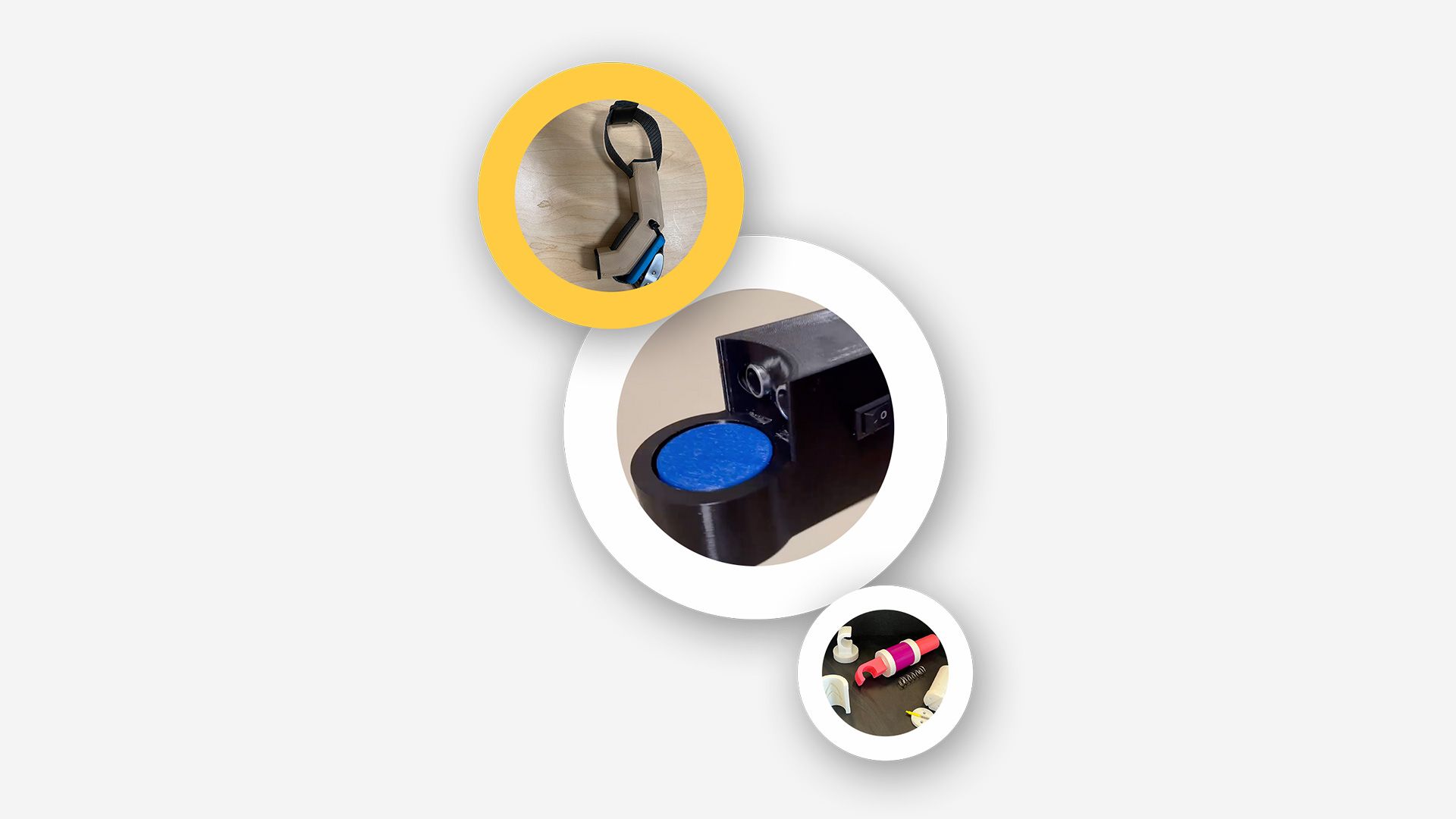
The winners of ‘Best Showcase of Iterative Design’ for the over 18 age group is Biola Engineering – Group 8 from Biola University (USA), who will receive a $500 gift card from Autodesk. The team designed an assistive jar opener for Daniel, who was born with opposable thumbs. The device cleverly makes use of a multi-material adjustable strap, which attaches to an ergonomic handle.